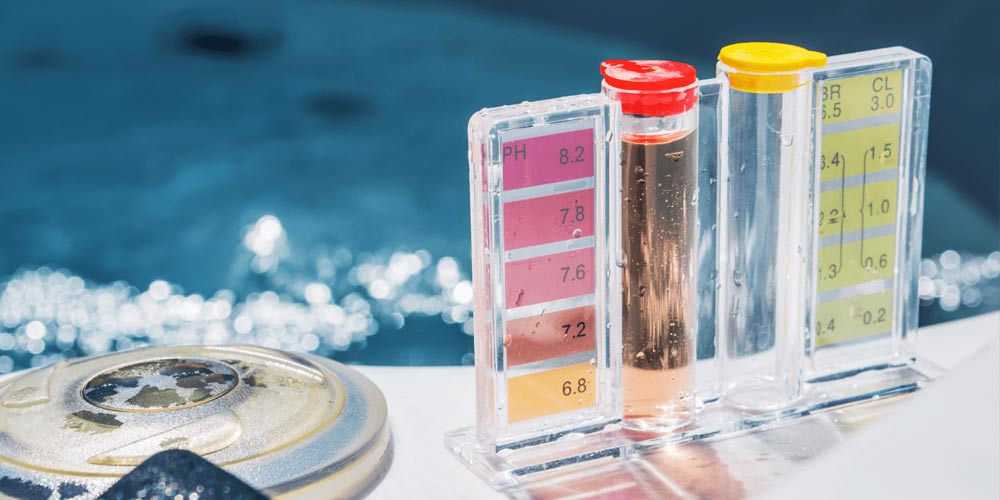Chlorine is one of the most important chemicals to keep your swimming pool safe and clean. It is used to kill harmful bacteria and pathogens that may breed in the pool water. In swimming pools, it is expressed in different forms. Free chlorine is often mentioned, and combined chlorine is its most common form in swimming pools. Total chlorine is the sum of the free chlorine and combined chlorine values. Knowing the difference between them is very important for pool maintenance.

Before diving into how to balance these types of chlorine, it’s important to know what they mean.

Free chlorine is the active form of chlorine. It kills bacteria, viruses and removes other contaminants.

Total chlorine is the sum of free chlorine and combined chlorine. Combined chlorine is the product of chlorine reacting with ammonia, nitrogen compounds or pool pollutants when the free chlorine concentration is insufficient. It has an unpleasant odor and irritates the skin.
Why Balancing Chlorine Matters?
Balancing free chlorine and total chlorine is crucial for several reasons:

Effective Sanitization: If your pool has too little free chlorine, harmful microorganisms may survive, leading to potential health risks for swimmers.

Water Clarity: When free chlorine is too low and combined chlorine is high, the water can become cloudy, making it visually unappealing and unsafe. Excessive levels of combined chlorine can also irritate swimmers' skin and eyes.
How to Balance Free Chlorine and Total Chlorine?
The ideal balance for a healthy pool is to maintain free chlorine levels between 1-4 ppm (parts per million). However, the standards for free chlorine vary according to the water quality and people's habits in different regions. For example, Europe has 0.5-1.5 ppm (indoor pools) or 1.0-3.0 ppm (outdoor pools). Australia has its own regulations.
Regarding total chlorine, we generally recommend ≤0.4ppm. However, some countries also have their own standards. For example, the European standard is ≤0.5, and the Australian standard is ≤1.0.
Here are some steps you can follow to achieve this:

Test Your Water Regularly:
Pool owners and managers should test their pool’s chlorine levels twice a day.

Shock the Pool if the combined chlorine exceeds the limit
Shocking, also known as super-chlorination. Involves adding a large dose of chlorine to oxidize the combined chlorine and bring free chlorine back to effective levels. The goal is to “burn off” the combined chlorine, leaving you with mostly free chlorine.

Maintain Proper pH Levels:
pH plays an important role in how effectively chlorine works. Keep the pool's pH levels between 7.2 and 7.8 to ensure free chlorine can do its job without losing efficacy.

Regular Cleaning:
Keep the pool free of organic matter like leaves, dirt, and other debris. These can contribute to higher levels of combined chlorine as the free chlorine reacts with the contaminants.
Balancing free and total chlorine levels is key to keeping your pool water safe and clear. Test your pool chemical balance regularly and take correct and effective measures. This will provide a safer environment for your swimmers.
Post time: Sep-12-2024
